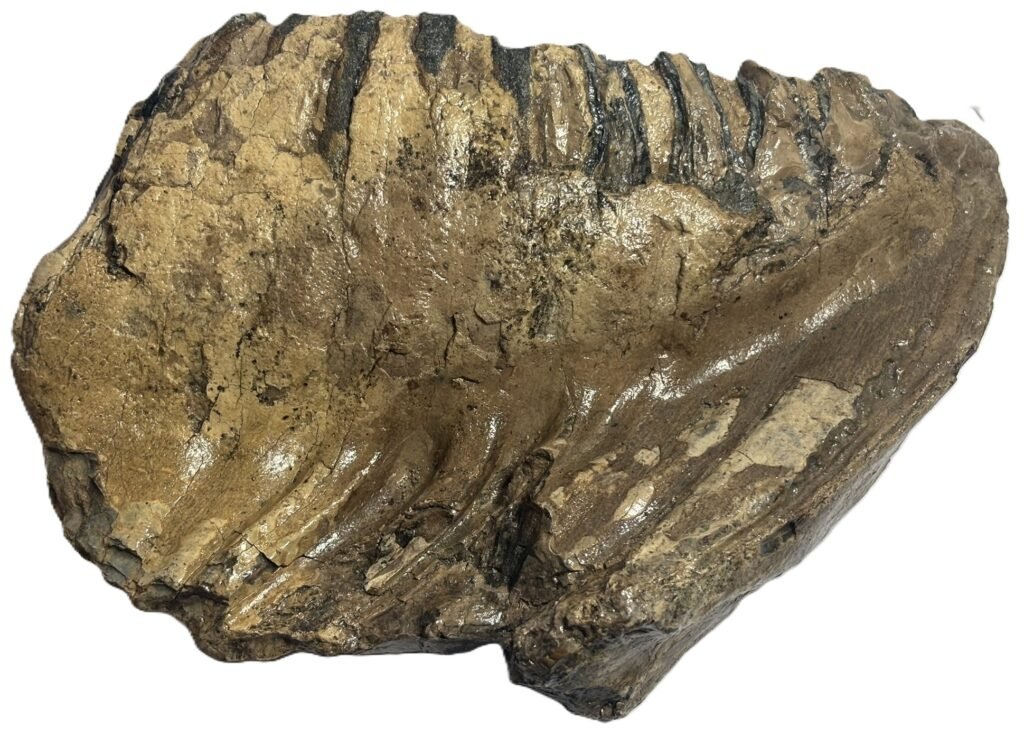
Mammoth fossils have been uncovered on every continent except Australia and South America. In North America, remains date back to the early Holocene era.
The Woolly Mammoth
The woolly mammoth (Mammuthus primigenius), also known as the Northern or Siberian mammoth, is the most well-known. Siberia’s frozen ground has preserved many carcasses, providing valuable specimens for study. Some early theories mistakenly suggested that mammoths burrowed underground to avoid sunlight and died upon exposure. Scientists have found Arctic plants in their digestive tracts, confirming they lived in cold environments.
Unlike modern elephants, woolly mammoths had smaller ears that minimized heat loss and prevented frostbite—an essential adaptation for their icy surroundings. They also had a hump of fat on their backs, similar to a camel’s, which stored energy for harsh winters.
Mammoths in History
In 1872, French explorers heading to the North Pole discovered so many preserved mammoth specimens that they survived on mammoth meat—broiled, roasted, and baked.
For centuries, fossil mammoth ivory has been exported from Siberia to China and Europe. Today, estimates suggest over half of the ivory sold in China comes from mammoths.
Mammoth Tusks and Teeth
Mammoths had long, downward-curving tusks that sometimes overlapped in older males. Some tusks reached up to 15 feet long, used for attracting mates and defending against predators.
Scientists estimate their age by studying the growth rings in their tusks, similar to tree rings. These rings also reveal seasonal changes—darker increments correspond to summers, while thinner rings indicate periods of hardship.
Their teeth featured alternating enamel plates and gradually wore down due to constant chewing. Since mammoths primarily ate grasses, leaves, and shrubs, their teeth were designed to handle tough plant material.
Mammoth Ivory in Art and Music
One of the oldest known musical instruments is a flute carved from mammoth ivory. Beyond its musical use, mammoth remains also played a role in myths and legends.
Ancient cave paintings frequently depict woolly mammoths, particularly in Western Europe. Some researchers believe these paintings served as hunting totems or religious symbols.
Myths and Misconceptions
During the Middle Ages and into the 18th century, many Europeans believed mammoth and mastodon bones belonged to giants drowned in Noah’s flood.
Mammoth Survivors
Scientific evidence suggests that small populations of woolly mammoths survived in North America as recently as 7,600 years ago. A fossil tooth discovered in 2015 revealed that a tiny mammoth population lived on Wrangel Island, off Russia’s northern coast, until about 4,300 years ago.
Mammoth Sizes
Male woolly mammoths stood about 3.5 meters tall and weighed up to six tonnes, comparable to modern African elephants.
The imperial mammoth exceeded 10 tonnes, while the Songhua River mammoth of northern China weighed up to 15 tonnes. By contrast, the extinct dwarf mammoth (Mammuthus creticus) stood only 1 meter tall, about the size of a baby elephant, and weighed just 300 kilograms.
Mammoths in Ancient Art
Early humans in Europe accurately depicted mammoth herds in cave paintings. One famous site, Rouffignac Cave—also known as The Cave of the Hundred Mammoths—features over 250 engravings, paintings, and drawings from the Upper Paleolithic period.
Mammoth Adaptations
Mammoths had a thick, yellowish-brown woolly undercoat about 2.5 cm thick beneath an outer layer of dark brown hair that reached up to 50 cm in length. Some hairs even grew up to 1 meter long. Beneath their tough skin, an insulating fat layer up to 8 cm thick helped them endure extreme cold.
Skull, Ears, and Hump
Mammoths had high, domed skulls. Their small ears minimized heat loss, an important adaptation for cold climates. A mound of fat formed a hump on their backs, a feature recorded in cave paintings even though it doesn’t appear in fossil remains.
Mammoths and Early Humans
Early Homo sapiens hunted mammoths for their warm fur and fatty meat. Researchers believe that hunting mammoths required patience and teamwork, shaping early human civilization.
The Future of Mammoths?
Scientists are exploring ways to bring woolly mammoths back through cloning and genetic engineering. By using preserved DNA, they hope to recreate a species similar to the woolly mammoth, possibly restoring them to Arctic environments.
